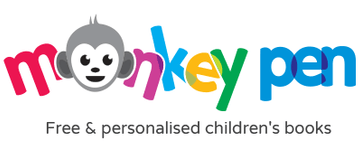Classroom Management: Using Coloring as a Calming Strategy
Nov 11, 2025
In a classroom, controlling behaviour is akin to walking on a tightrope. On the one hand, you'll want lively, engaged students. However, you require a peaceful and focused space for working and thinking. Teachers need simple, reliable tools that can shift the mood from anger to calm. This is why coloring can be helpful. Coloring in as a class relaxation activity can be a peaceful, low-prep way to help students refocus. It's one of the resources every teacher should be prepared with.
Why Calm Matters for Classroom Behaviour
When students are emotionally agitated- feeling stressed, anxious, angry, or simply full of excess energy- they often exhibit behaviour that is. They might yell or twitch a lot, drift away from the task at hand, or even disrupt classmates. On the other hand, in a classroom with peace, smooth routines, and sustained attention, learning becomes easier to access.
Studies support the notion that calming activities can help lower stress and improve concentration. For instance, a 2015 study revealed that children who participated in a structured coloring exercise (a mandala pattern) saw a dramatic drop in anxiety before taking a spelling test. Other work with adults shows similar effects on anxiety reduction from coloring. Therefore, adding shading to your tools for managing behaviour is logical: it's easy to use, evidence-based, and flexible.
Coloring as a Classroom Calming Activity
What is coloring for behaviour management? Coloring with a purpose is not only for "fun time" but also to promote the ability to remain calm and focused.
Here's how coloring can be used for students in classrooms:
- Transition tool: Following a break or during a fun activity, encourage students to enjoy five minutes of coloring to help them settle in before their next class.
- A calm-down area: If a child is clearly upset or disengaged, they may move (with their teacher's permission) into a calm space using coloring materials, rather than being escorted out.
- Focus break: During long lessons or after a long day of work, a coloring break can help reset your focus.
- Early finisher activity: Instead of getting distracted or wandering about, early finishers take out an activity sheet to color and then quietly participate.
The benefits are numerous. Coloring offers a non-verbal outlet that stimulates fine motor skills (which assist with self-regulation) and provides a space for creativity to flow. Teachers report less disruption, more efficient transitions, and calmer classroom atmospheres.
Practical Teacher Resources: Implementing Coloring for Calm
Here are a few actionable ways and tips for coloring a popular classroom relaxation activity.
When and how to use it
- Schedule short coloring sessions; 5 to 10 minutes is ideal for younger children. The longer sessions could cause anxiety and may become "just another task."
- Make sure to use it at regular times (e.g., at lunchtime, before a test, or after students return from gym) so that students are prepared for that "calming colouring moment."
- Use a visual signal to indicate: "When you see the colouring icon on the board, it's colouring time." The consistency of your actions will help to maintain calm.
Materials and setting up
- You should have a variety of coloring pages prepared. You could use mandalas (which research has shown to be effective) and themed pages that connect to your classroom's curriculum or topic.
- Give children a variety of crayons instead of large markers. It helps children calm down while keeping them engaged and active.
- Create a coloring corner for children to use once they begin shading.
Coloring activities of different types
- Mandala patterns: These intricate designs can help pupils to improve concentration and focus.
- Theme-based pages: Themed pages on subjects like birds, animals, nature, and technology related to the subjects being studied will help teachers convey ideas more easily and help students remember them more clearly.
- Color-by-code sheets: Color by number or by letters—help children learn letters and numbers while preparing them for new concepts.
- Coloring gives you complete freedom to choose colors and a sense of achievement once you complete shading pictures. It provides motivation.
Tips for managing behaviour effectively using coloring.
Here are some additional tips to ensure that coloring is an efficient and consistent method:
- Keep things simple and consistent: Do not change your system each time. Use the same signals, tools, locations, and materials so students always know what to expect.
- Choose age-appropriate designs: Younger children enjoy simple pictures, while older students can handle detailed mandalas or coloring pages related to their lessons.
- Use coloring to relax, not as punishment: Do not associate shading with bad behaviour. Instead, explain that "we color to calm our minds and refocus."
- Encourage reflection: Have a brief conversation before or after coloring to help students recognize their feelings and learn how to manage them more effectively.
- Connect coloring to positive behaviour: Incorporate it into your classroom behaviour plan. For example, allow students who show respect and complete their work to enjoy a short coloring time as a reward for reasonable effort and focus.
Using Coloring to Create a Calmer and More Focused Classroom
Managing classroom behaviour doesn't always need strict rules or constant correction. By adding creative, straightforward calming activities like coloring, you give students a way to control their behaviour, improve focus, and start learning with a clear mind. Shading is an easy, low-cost, and effective tool for bringing calm to the classroom.
Try it out this week! Pause for a few minutes during the day, hand out coloring sheets, let the class shade quietly for five minutes, and then reflect together before continuing with lessons. Over time, you may notice smoother transitions, fewer distractions, and a more focused and positive classroom atmosphere.
You can also explore the classroom-friendly coloring pages from Monkey Pen. They're easy to use in daily routines and help create a peaceful and engaging learning space. Explore Monkey Pen's selection of free nature-themed coloring pages that you can print to kick off your adventure. Please choose any of our free printable coloring pages and printabe coloring books to create your own sensory experience. The website also offers various educational resources, including posters, children's books, and dot-to-dot workbooks. All are available in PDF format at absolutely no cost.


